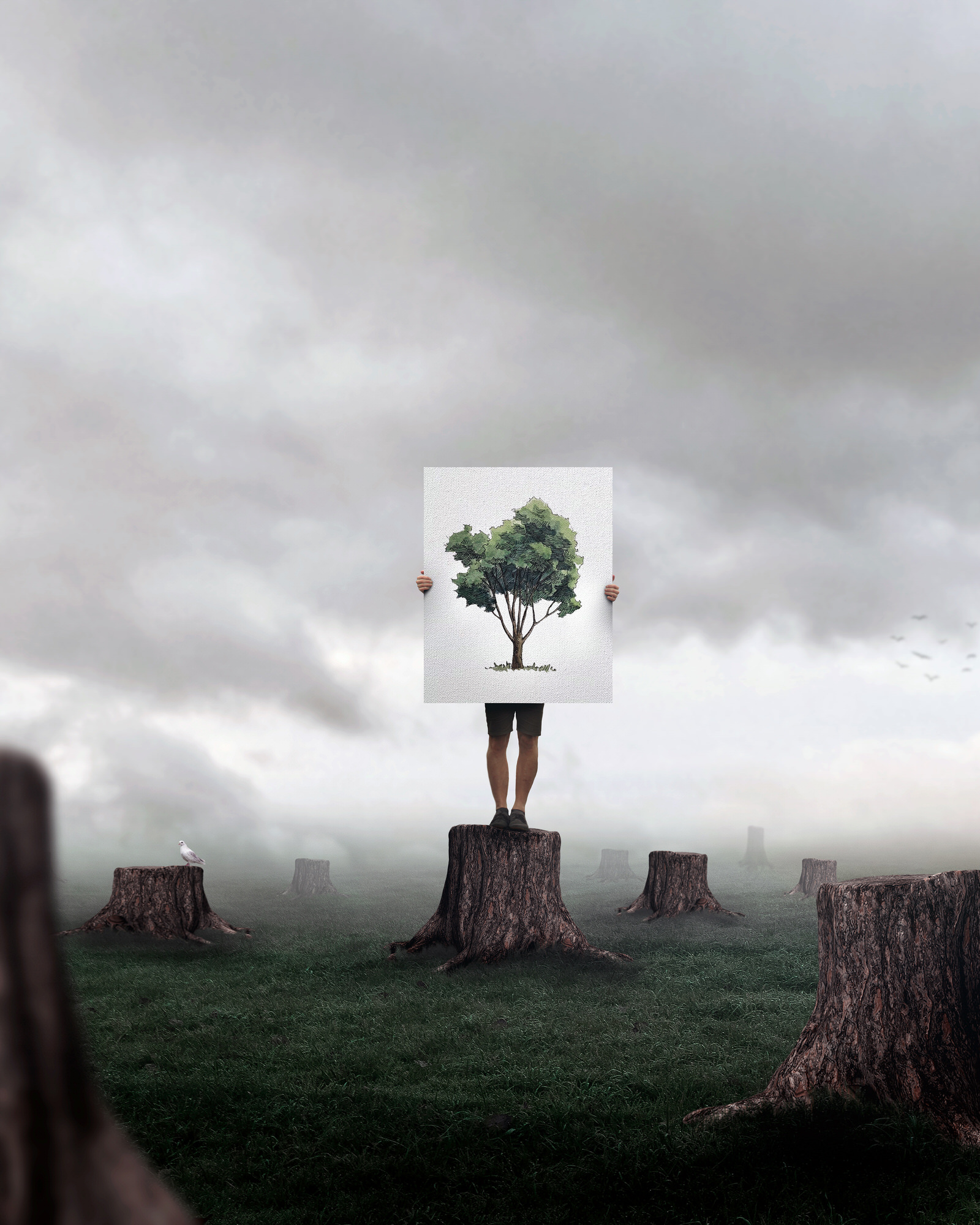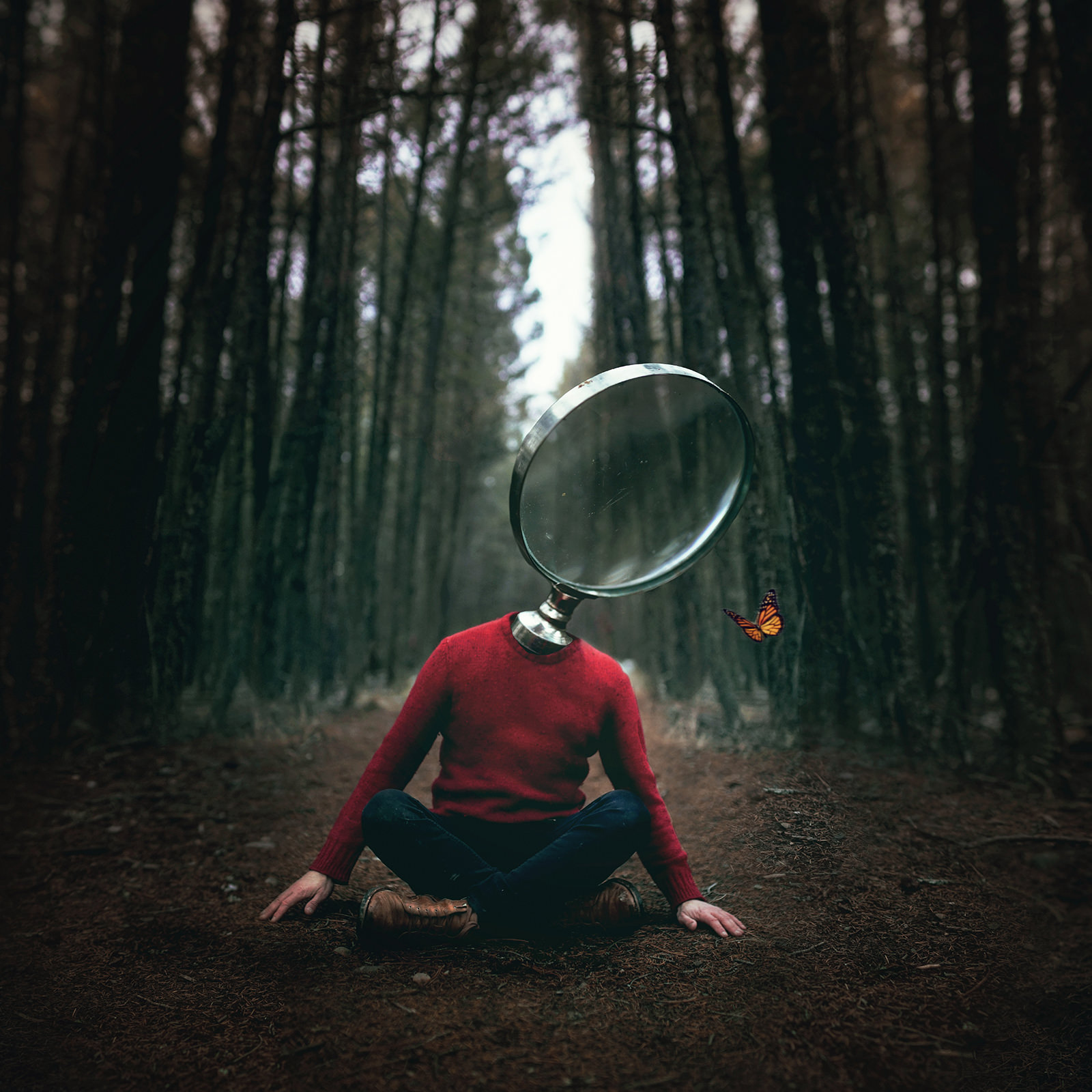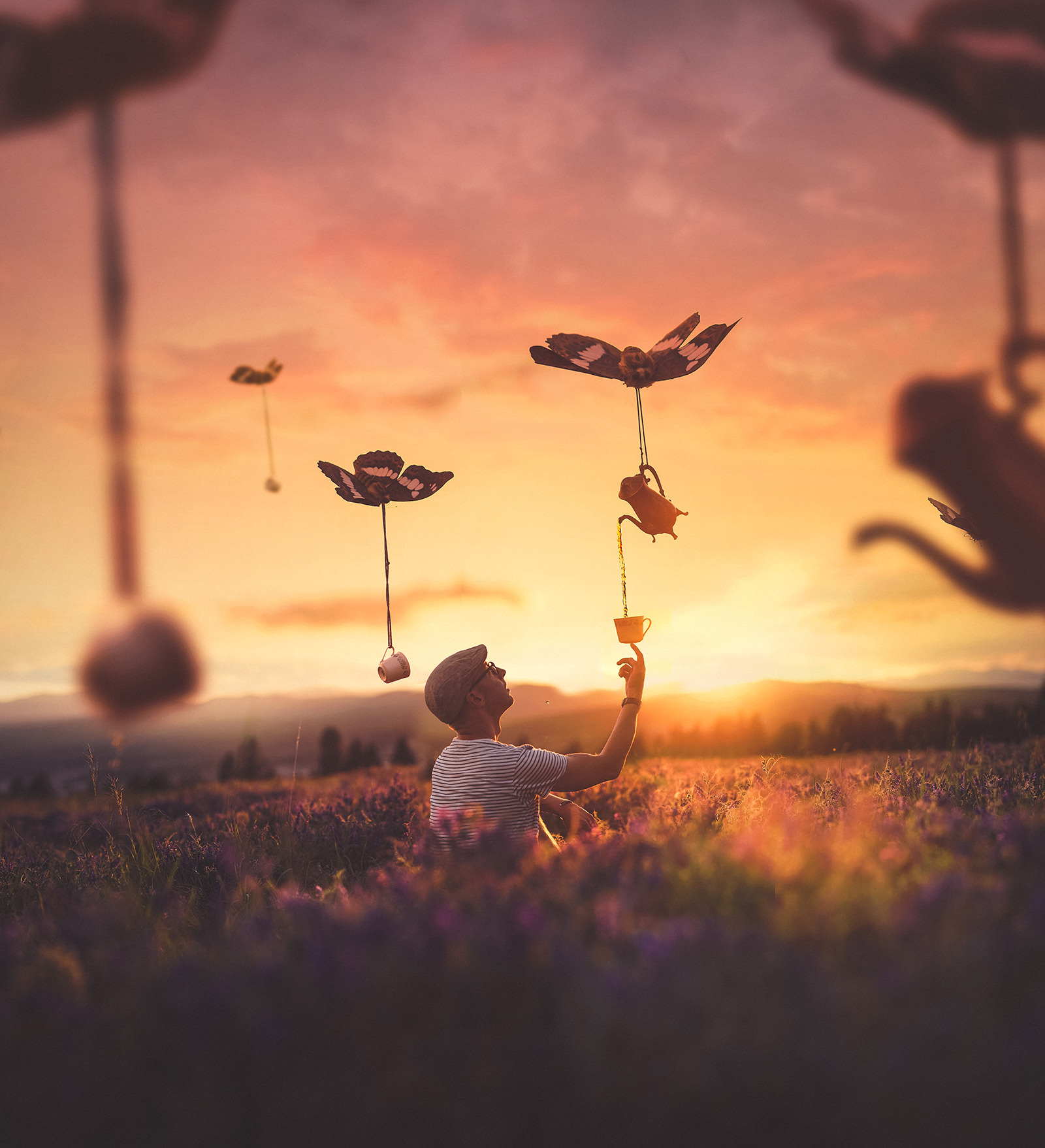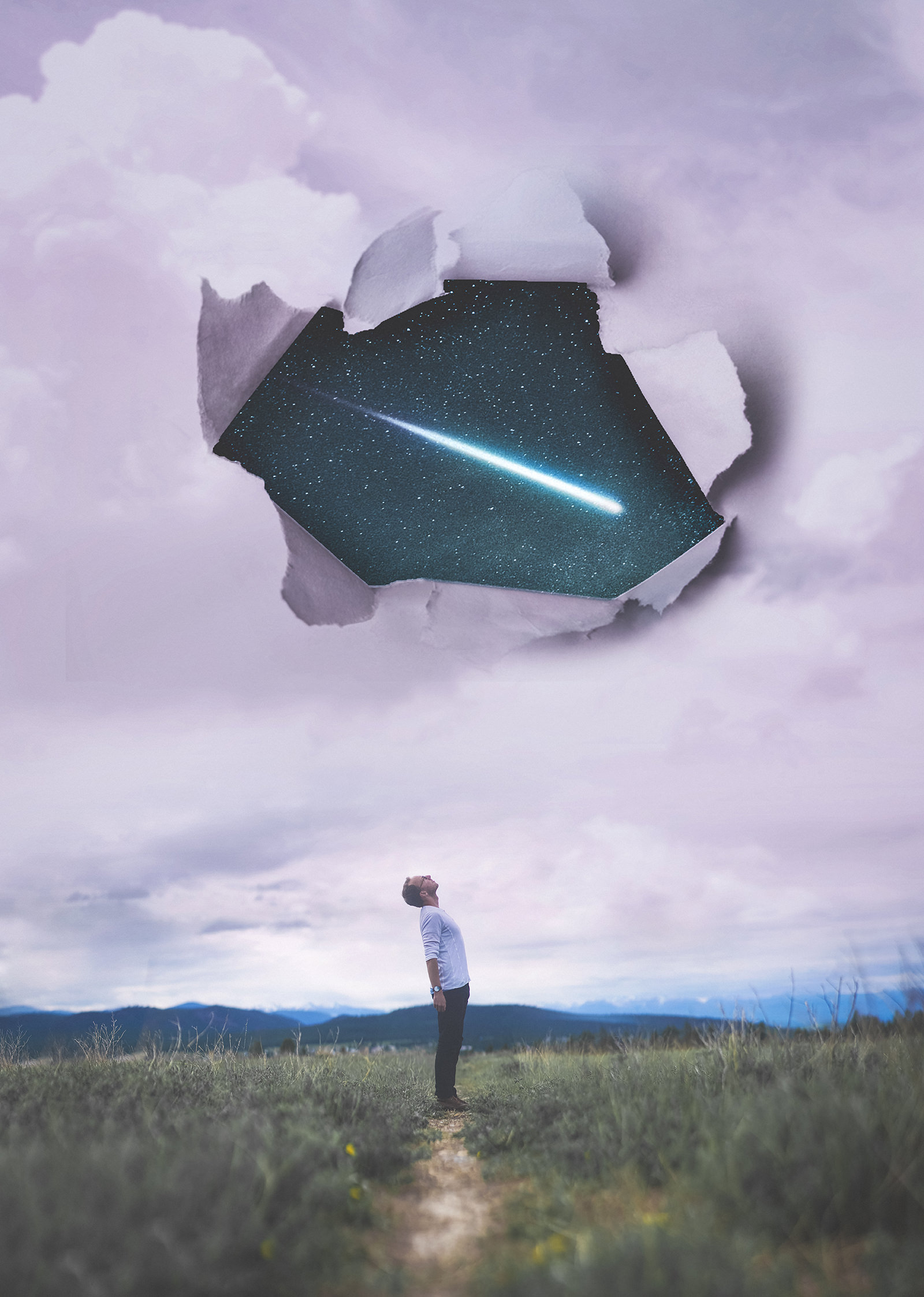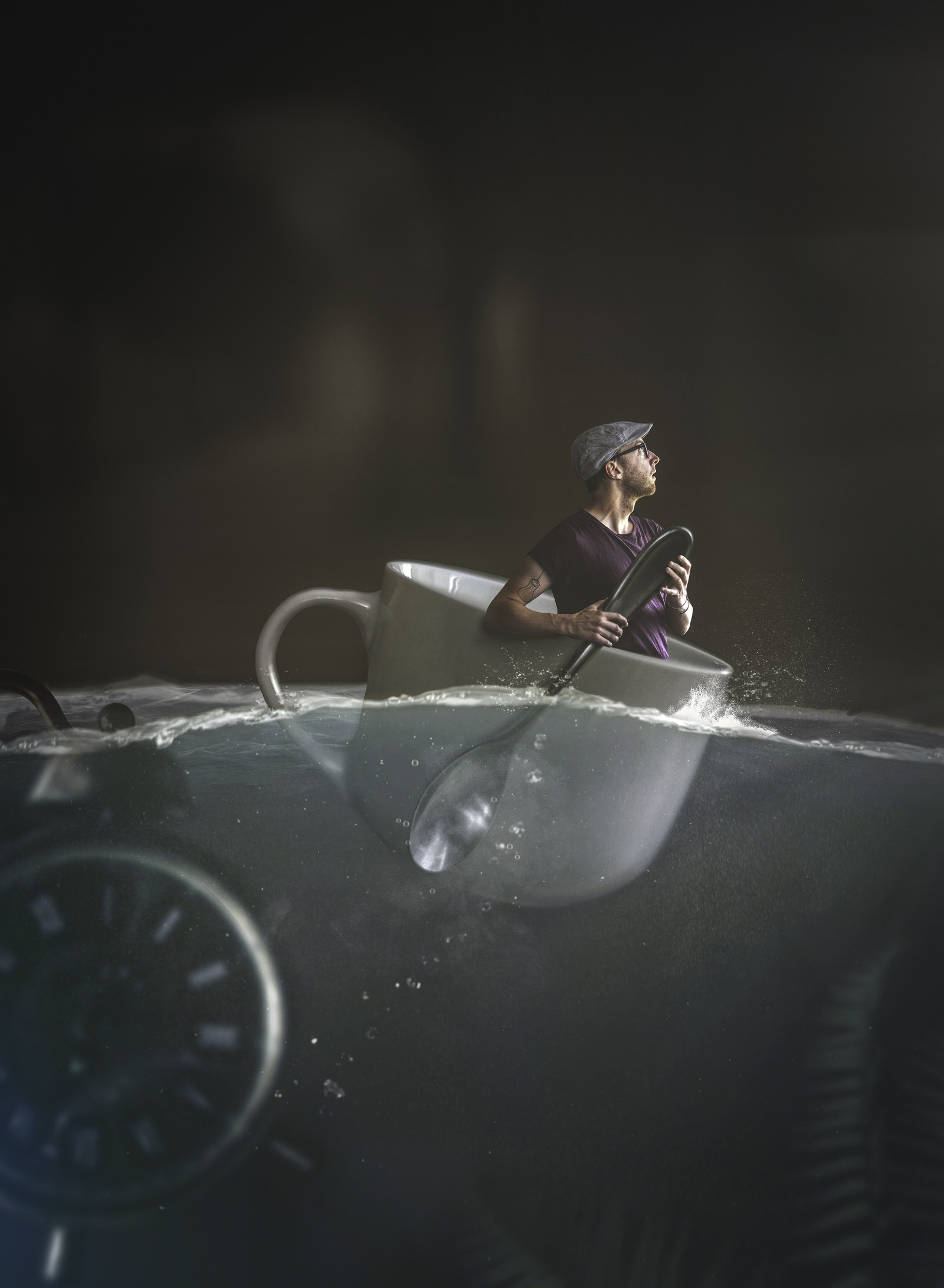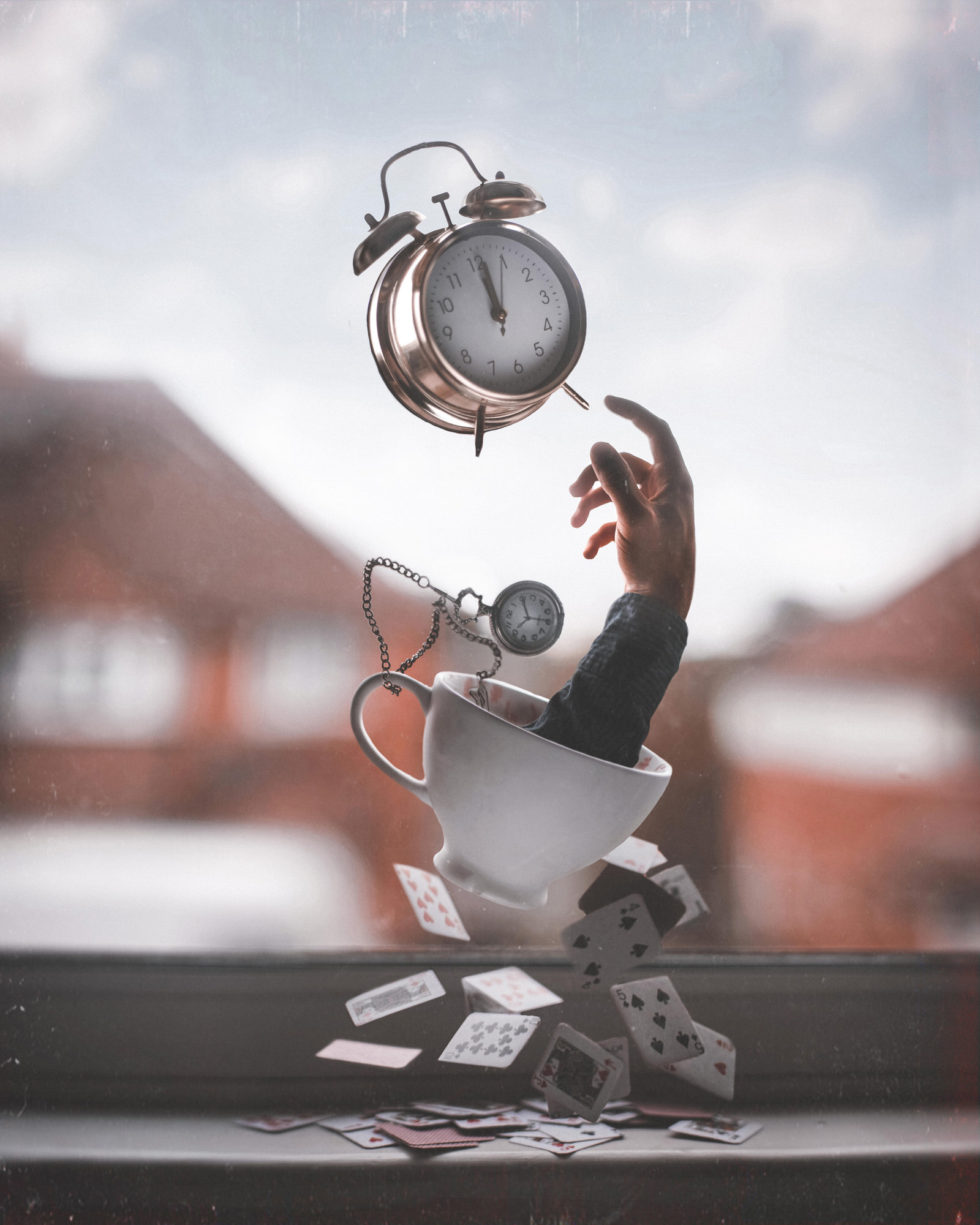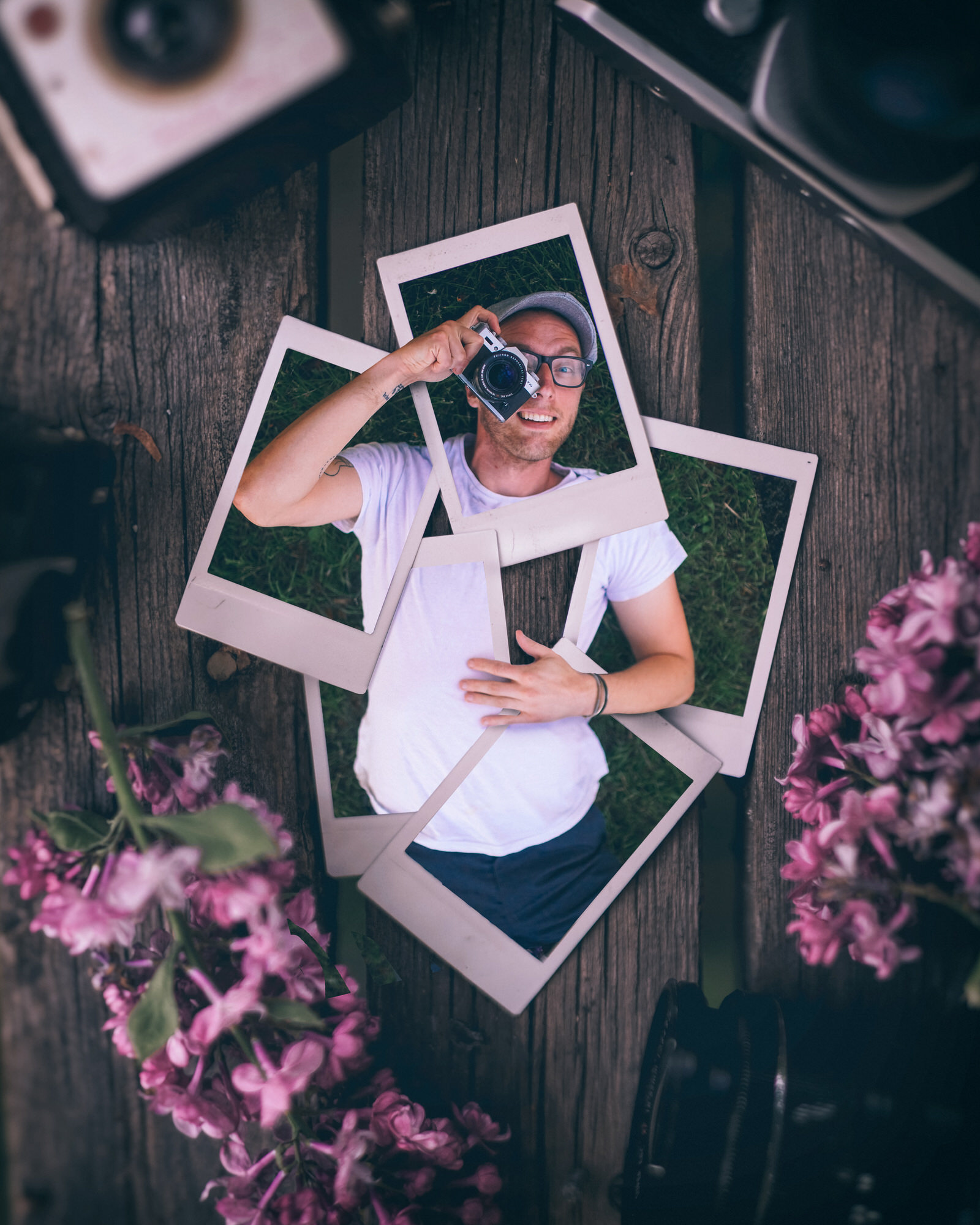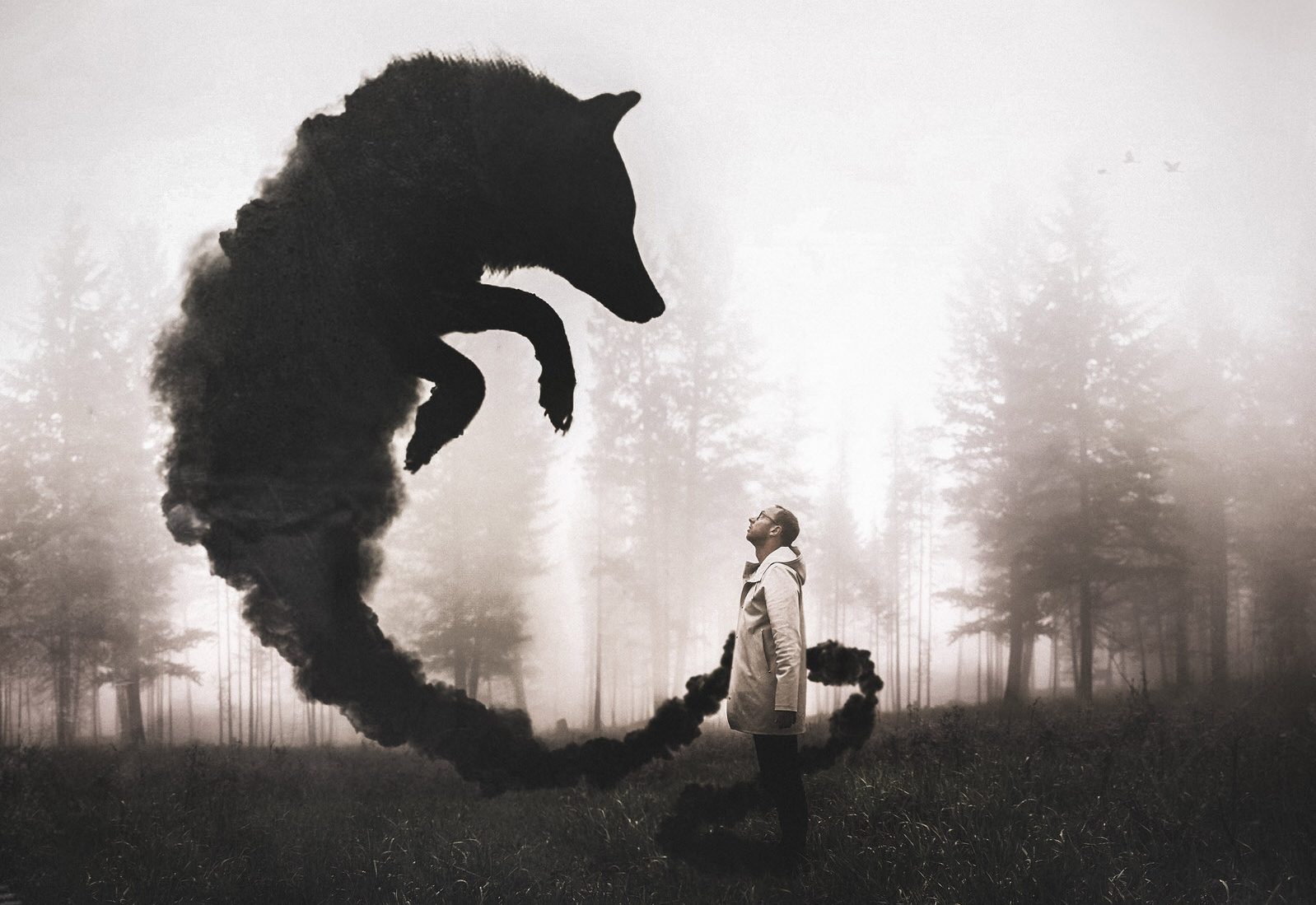
How to Bring Out Your Inner Lewis Carroll Through Photographic Composition with Joel Robison
Fine art and conceptual photographer Joel Robison is a master at telling bizarre, fairytale-like stories that bring the unreal to life. His fantastical works are inspired by our favorite Disney films and children’s fiction authors like Lewis Carroll and Dr. Seuss. For each of his images, Joel aims to bring surreal concepts to life, without trying to make sense of it all – he finds beauty in the chaos, colors, and just plain weirdness of it all and tells wonderful stories that push our imaginations to the limit.
While much of Joel’s work focuses on self-expression and storytelling, over the years he has worked on commercial projects for Coca-Cola, FIFA, Yahoo, Adobe, and Oprah Magazine, to name a few. He also spends a good portion of his time teaching workshops, running community-based projects, and speaking at conferences.
This year, Joel was selected to represent Canada for the third time at the World Photographic Cup. While he didn’t make it to the finals, his chosen image, When It’s Gone, is a beautifully devastating portrayal of deforestation and loss that makes us look closer at our negative impact on wildlife, ecosystems, and climate.
WPC Team Canada 2020, Category: Illustration/Digital Art
Today, we talk to Joel about the inspiration behind his super imaginative images, finding beauty in chaos, and the importance of creating fictional worlds for yourself through art.
How did you get started in photography and compositing?
Well, as a kid, I always wanted to be an artist and I didn’t really know what that meant. And I wanted to be an animator at Disney. That was sort of the dream job; nothing else in my life mattered, that was the only thing I wanted to do.
I would draw everything and I would kind of create my own stories and try to turn them into comic strips and stuff. And I got to the point in my teen years where I realized that I couldn’t actually draw that well. As much as I loved it, I couldn’t actually get what I needed done, and I realized that I probably wouldn’t be able to be an animator or do that sort of thing. So I put all sorts of art and that kind of creative life aside and went to school, and then I realized that something huge in my life was missing. I felt like that creative outlet, I needed it back in my life. So I started trying all sorts of different styles and mediums. I was trying drawing, and painting, and even sculpture and different things, and nothing really ever fit, it didn’t feel like it was actually coming from me.
And then just by chance, I came across Flickr, and I just saw some really cool photos of things that people had been sharing that I’d never seen before. I grew up in a small town in Canada and photography there is very much either mountains and wild animals or various traditional portraits. I hadn’t ever really seen any creative photography, and Flickr kind of opened my eyes to that. Without any sort of knowledge about cameras or anything, I just bought a camera off of eBay, and it came in the mail and I just picked it up, and every day I would go out and take photos. And eventually, it just felt like that was the way that I was supposed to be creative.
I kind of started off, I think, as everyone does when they get a camera – they start taking pictures of grass and clouds and trees and flowers and everything. And then I realized that the stories and the ideas that I wanted to draw, I could maybe try and use my camera to do that. I came across the free trial of Photoshop and tried it, and I kind of just… it all fell together and it was like this is the thing, this is the way that I’m supposed to be creative now.
Did you find Photoshop and the editing process hard to learn or was it something that just came naturally to you?
I think I’m one that learns best by doing rather than reading about something or kind of learning the actual way to do it. I think for Photoshop, it’s really more exciting for me because it’s a pretty tangible program so the things that you do, you can see the result right away. I really like that kind of process of being able to see right away what different buttons and different tools are doing. And I kind of picked it up pretty quickly. I mean, this was the time before YouTube, and before PHLEARN, and before all those resources were out there.
[There were] very few kinds of tutorials that would teach different skills. And I would look at them and kind of glean the little bits that I could and use little bits that I could and eventually it became second nature. I feel like now I get into it and it’s like a comfort zone. It’s like I know what all the buttons do, I know what all the menus do, I know what everything is. And it just sort of feels like a comfortable place to go and create. It doesn’t feel as intimidating now, but every once in a while they add new things and it brings back that feeling of like, “Okay, let’s figure out what this does.”
Do you have any particular habits that are part of how you begin your process now?
Yeah, I tend to shoot with prime lenses, and I like to have a lot of negative space in the work that I create, so the first step is usually kind of expanding that frame so using the Brenizer Method, or expanding the canvas size and kind of pasting all the different shots in together like a puzzle to build it up. I think every image of mine starts in that same way, one main image kind of in the center, and then just stitching them all together to kind of build out this bigger photograph.
And what happens when you have a creative block? What are your steps for that, how do you get past it?
I think it’s definitely something that we all experience. And when I first started in photography – I am a bit of a stubborn person, so I thought the only way I’m ever going to get better at doing this is if I do it every day. And so I did a 365 project and I took photos every day and edited them every day. I did one year, and I realized that I wasn’t quite where I wanted to be so I did another year, and I did four years.
There were days for sure where there’s no ideas or you don’t feel confident in what you’re doing. And in that situation, you just kind of have to do it anyways. And you learn, I think, really clearly what your personal style is and what you like and what you don’t like and what you think looks good.
But now I realize, if I feel pressured to create or I feel like there’s a creative block in my head and I can’t get past it, I kind of just lean into it a little bit. And I realize that, you know, I have other things in my life that make me who I am, and it’s okay to spend time doing those things and have that creative muscle to come back.
I think that when you take a break, and when you kind of relax that one part of your life and spend time doing the other things that make you who you are, then that creativity comes back and then it’s fueled by different parts of who you are. So I always recommend to students that I teach or to people that ask me that question, you know, what do I do when I feel creatively blocked, it’s just relax and understand that this happens all the time, that it’s a cycle, that it’s never been going to be the end of your creativity and just to find those other things that make you who you are and to enjoy doing those things so that you can put that into the work that you’re doing.
Right, exactly. Nowadays, it’s a lot easier to get inspiration just by hopping online and going on Instagram. I mean, with the amount of creative work and art that’s so easily accessible. But as far as your inspirations go, who do you think were the biggest influences on your work, and who are the photographers you most admire?
Yeah, I think growing up in a small town, I wasn’t really exposed to many kinds of photographers or different forms of art. So I was really inspired by storytellers and people that created their own world. So, you know, Walt Disney or Dr. Seuss or Lewis Carroll, different authors or writers or creators that created different worlds all for themselves. Those are the stories that I was really easily lost into.
And then when I started getting into photography, I was really lucky to kind of start at a time when there were a lot of other people getting into the same thing that I was doing. Aaron is one of them, and Rosie Hardy, and Brooke Shaden, and kind of that group of people were all starting around the same time. And I definitely looked at them as inspiration because they were creating work that was really powerful and really creative and kind of churning it out on a pretty regular basis as well, which makes it easy to feel like you can do the same thing.
Even now, those are people that I look to, photographers like Rodney Smith, and Tim Walker, and Annie Leibovitz that are incredibly creative and have years and years and years of experience and kind of show me that there is a place for creative photography in the world.
I think it’s interesting, going back to Disney and Dr. Seuss, that there’s that fantasy, fairy tale sort of story behind your images. We always like to ask the photographers we interview if there’s a book they would recommend to other photographers. So I’m kind of curious what yours would be!
That’s a tricky one. I mean, obviously, I think the story that kind of fits into so much of the work that I’ve always wanted to create is Alice in Wonderland and that’s mostly just because it makes absolutely no sense. That’s the beauty of it – that it doesn’t have to make sense but you can just enjoy the chaos and the confusion and the colors and everything. When I read it for the first time as a kid, I was so confused and it didn’t make any sense, and I thought, “This is such a weird story to read.” Then as I read it again when I was older, I realized that that was sort of the magic in it, that it didn’t have to really make sense, you could just enjoy that nonsense bit of it.
I think of the story as a creative photographer and as an artist, I think reading a story like that – that allows you to relax that critical part of your mind where we are trained to think that that doesn’t make sense, or it has to be real, or it has to follow the rules of reality – to read a book that totally bends all of that and doesn’t make any sense at all, I think that that’s really helpful as a creative person.
Definitely. So you think that that’s a direction you take in your own work then?
Absolutely. Growing up, my family really allowed me to be creative and never really told me to get my head out of the clouds, or to create things that were more real, or think more critically, I guess. I think that that’s something that we lose a lot. As we grow up we’re kind of told to stop daydreaming and to stop thinking outside the box and by the time we’re adults, we kind of lose a lot of our creativity. I hear that a lot from other photographers, that they feel like they’re not creative, or they feel like they’re not an artist, or they can’t do it because they don’t have that creative element. But I think that we are all born with it, we’re just kind of trained to close all those doors in our mind.
I think in my work especially, I try to allow myself to explore those different kinds of avenues in my mind of things that might not make sense. Or maybe it looks real, but it’s not real, or maybe it could be real if you allowed yourself to believe it could be, and I think that’s partly the fun of my own photography. Creating it is allowing my brain to think about things that might be real, might not be real, and seeing what it would look like if it was real.
Yeah, your work is very imaginative. And I think it does tell a great story. Do you have a quote that always fires you up, something that you say to yourself to get you motivated?
Yeah, I actually have it tattooed on me. It’s the quote, “Be the change you wish to see in the world.” I think that that motivated me as a kid and that was a quote that we kind of repeated a lot in school and we repeated a lot in my family. It sort of just means if you want change in the world, you have to be it. And I really looked to that in a lot of different ways in my life, and not just creatively but personally in the friendships, relationships I have, and how I want the world to be. I think it works in just about every aspect of someone’s life. If you want something to change, you just have to be the one to change it.
I saw that you were selected to represent Canada at the World Photographic Cup, congrats!
Yes, I was selected to represent Canada for the third time at the World Photographic Cup. Unfortunately I didn’t make the finals, but it’s certainly a great feeling to represent my country on a national level! It’s definitely an amazing feeling to be listed with incredible artists from around the world.
Can you tell us what you’re working on now?
I’ve got quite a lot of public speaking and conferences booked, which is definitely something I was never thinking about when I started photography is getting into that aspect of it, but it’s something I really enjoy, being able to travel and share that excitement with other people. I’ve been teaching online classes and starting that up [this] year as well.
I will also be a keynote speaker at the upcoming Canadian Imaging Conference in April, which is Canada’s premier photograph conference. I’ll be giving a three-hour lecture and doing an additional social media workshop as well.
I’m currently leading a year-long creative challenge project for the third year. It’s called The Lightbulb Project and it’s a global creative challenge that issues a creative prompt every week to artists around the world. It’s an incredible community that has been built over the years and it’s fantastic to see so many different interpretations of one theme. Anyone can join the project via Instagram @lightbulbproject.
Joel has taught over 400 students from all over the world how to build a successful photography business by creating a strong portfolio and social media presence. To find out more about his workshops and see his impressive gallery, visit Joel’s website and follow him on Instagram @joelrobison.
